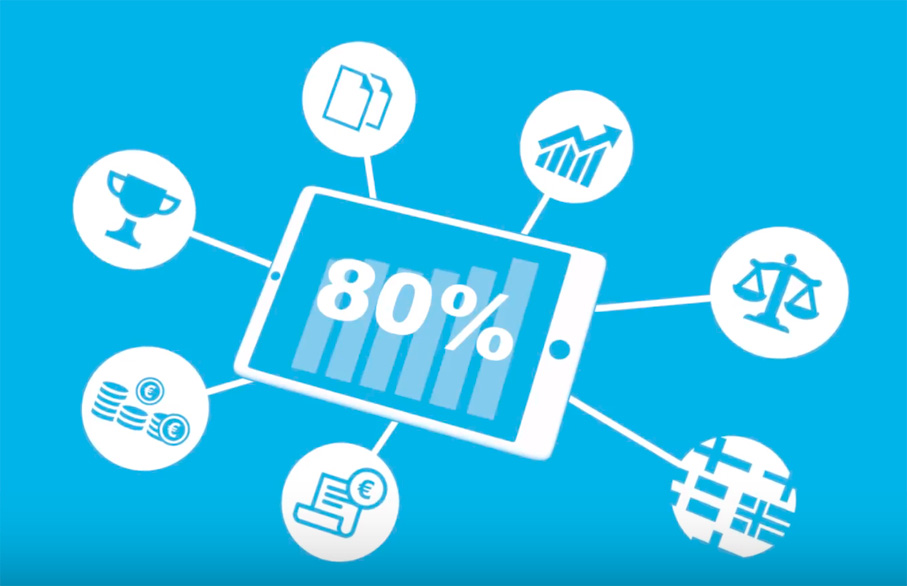19.4.2018 - Johannes Puro - SAP

– It is about time for companies utilizing SAP-technology to get interested in the next generation enterprise resource planning, Jakub Zurek from Tieto begins the interview.
Zurek is referring to the transformation from SAP ECC to the next generation ERP, SAP S/4HANA. The term HANA stands for SAP’s database and stems from the words “High performance Analytics Appliance”, while S/4 represents the ERP’s new version.
We are having a discussion with Zurek and two other Tieto experts, Saila Huurinainen and Matti Hartikainen, regarding challenges and above all opportunities relating to moving to SAP’s new ERP
“Would the market be mature for the digital transformation in 2018?”
For the past years, the team has been working on packaging the transformation to SAP’s new ERP into an attractive, cloud-based form that is easy to implement. They have had their work cut out for them, because these adjectives are not inherently ones that IT-professionals associate to SAP ERP projects.
Gartner, for example, headlined its 2015 article regarding SAP S/4HANA:: “SAP S/4HANA Is a Transformational Shift for SAP and Its Users, but Hold on to Your Wallets for Now”
Would the market be mature enough for the digital transformation in 2018?
Why should a company that has for the past 20 years ran a SAP platform now go ahead with the investment? Why is it that Gartner spoke of a digital transformation particularly regarding SAP?
– Because many of the SAP versions currently in use do not enable making use of digitalization benefits: the user experience is outdated, a single transaction can take several minutes, and the software can be transmitted from a traditional desktop. Why should businesses settle for inferior user experiences compared to services available for consumers? Saila Huurinainen asks.
How did we end up in a situation where nordic companies are full of outdated ERP’s?
The choice of transferring to a new ERP has pros and cons: change is always challenging, but it will bring digitalization benefits.
– During the past five years SAP has taken a huge leap with HANA. Companies that have not yet embraced this change are now seeking ways to achieve the transformation. Our goal is to make the change easy, describes Huurinainen.
One reason for the slow pace of change is the fact that some companies have highly tailored ERPs, which amplified their earlier SAP projects.
“Companies that have not yet embraced this change are now seeking ways to achieve the transformation.”
Matti Hartikainen used to work in customer companies. He explains that end users may wish for very specific adjustments to the information system.
– In my previous job we attempted accomplishing a Nordic Template in SAP for all the countries we operated in. The project called for a great deal of change management and in the long run we ended up having tailored solutions for every country, which naturally led to slow implementation and higher costs, Hartikainen reminisces.
He does not, however, believe that projects could currently be carried out on this scale, with such focus on a number of small features.
– Cost pressures are entirely different now. These days a tighter focus would be essential, and it would be impossible to start fulfilling every single detail and end user wish.
The utilisation rate of some tailored solutions also speak in favour of keeping focus: according to Tieto, over half of tailored solutions have ultimately not been used in many organisations. Accordingly, standardized processes are now being incorporated by companies.

According to Matti Hartikainen and Jakub Zurek many companies are run with outdated ERP’s.
Operative processes, such as material management, vary from one industry and company to another. But administrative processes, such as financial management, HR, and sales, are very similar in different industries, which creates opportunities for standardized processes.
What does this mean in terms of implementation to an organisation considering S/4HANA transformation or procurement?
– A pre-installed ERP provided as a cloud service means fast implementation and return on investment. For instance, 70% -80% percentage of the financing features are immediately available. Tieto has implemented S/4HANA projects in as little as 3 months, says Saila Huurinainen.
– The pricing is based on the number of users per month, which makes usage costs easier to predict, Zurek adds.
A significant amount of the new features are a result of SAP product development, in addition to which Tieto has conducted its own product development to enable value add ERP transformation.
This is how the Tieto Core for SAP S/4HANA was born. It offers best practises and standard processes for digital transformation with SAP technology, i.e. a low-threshold method of utilising the digital ERP.
“Saila Huurinainen emphasizes the meaning of real time transactions for business”
We have considered SAP’s best practises and assessed how well they cover company needs in financial management processes. Tieto Core includes for example local financial transaction formats, Nordic VAT, depreciation rules, as well as possibilities for e-invoicing and invoice verification, Huurinainen describes the results of development work at Tieto.
She also emphasises the importance of real-time financial management: Business Intelligence reporting enables real-time performance monitoring, instead of assessments once a month upon finishing monthly reporting.
Reporting is one of Tieto’s favourite areas, because further development of SAP’s own reporting tools is an essential aspect of Tieto Core.
– Tieto’s solution enables self-service reporting on-the-go, Huurinainen points out.
One of SAP S/4HANA’s value propositions is to bring information to end users from the cloud regardless of the platform, and also on mobile platforms. This eliminates the need to wait for a laptop to fire up, or the month to end.
– It is advisable to start the move to SAP S/4HANA as soon as possible. The earlier the transition is made, the more efficiently the company can utilise the digital architecture, such as possibilities offered by real-time analytics, mobility and big data, Hartikainen concludes.
Watch also the video: Tieto Core for SAP S/4HANA as a Service
More on the topic: Tieto Core for SAP S/4HANA
Tieto’s website
Interviewee
Author

Leave comment - comments(0)